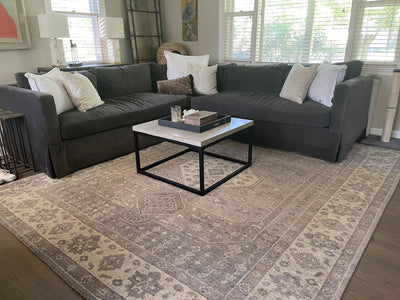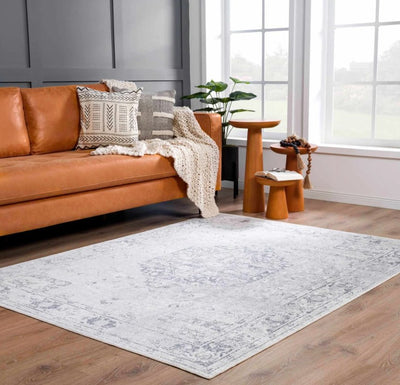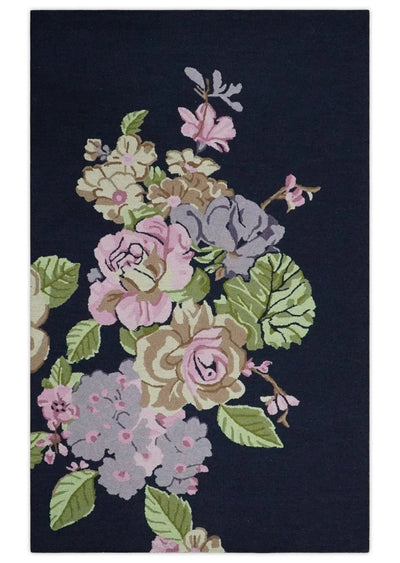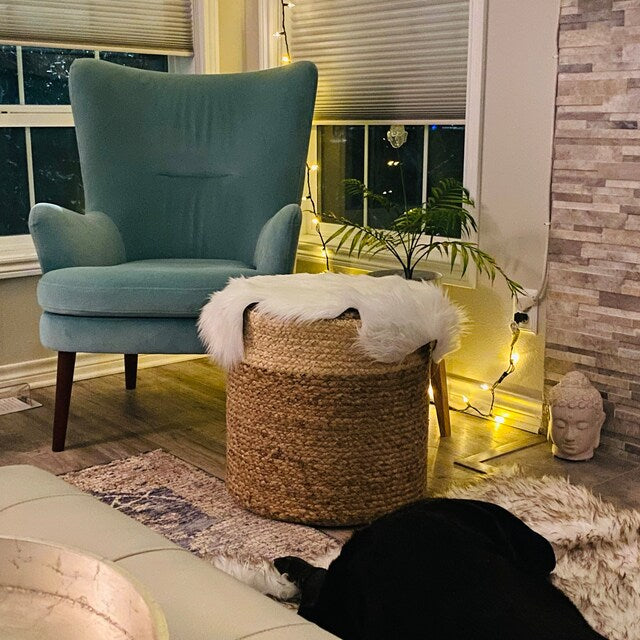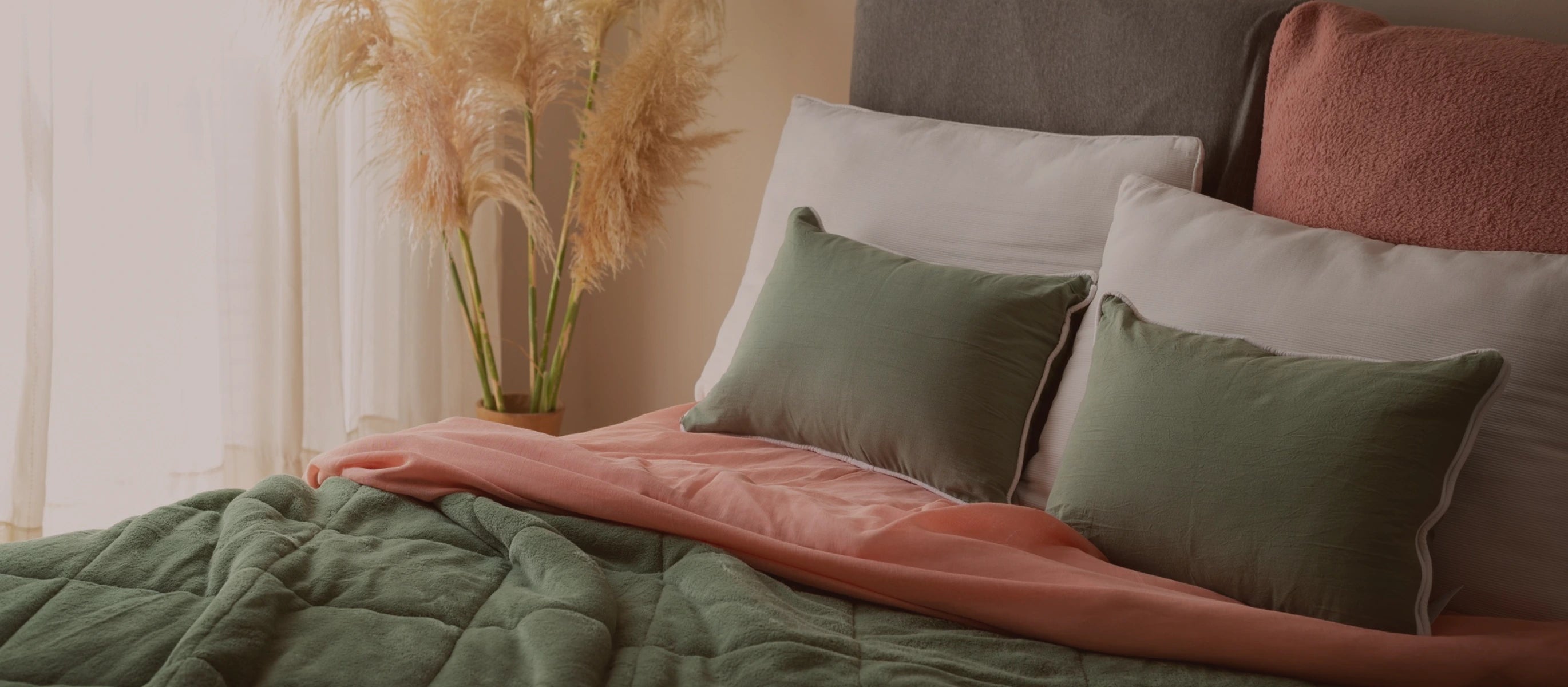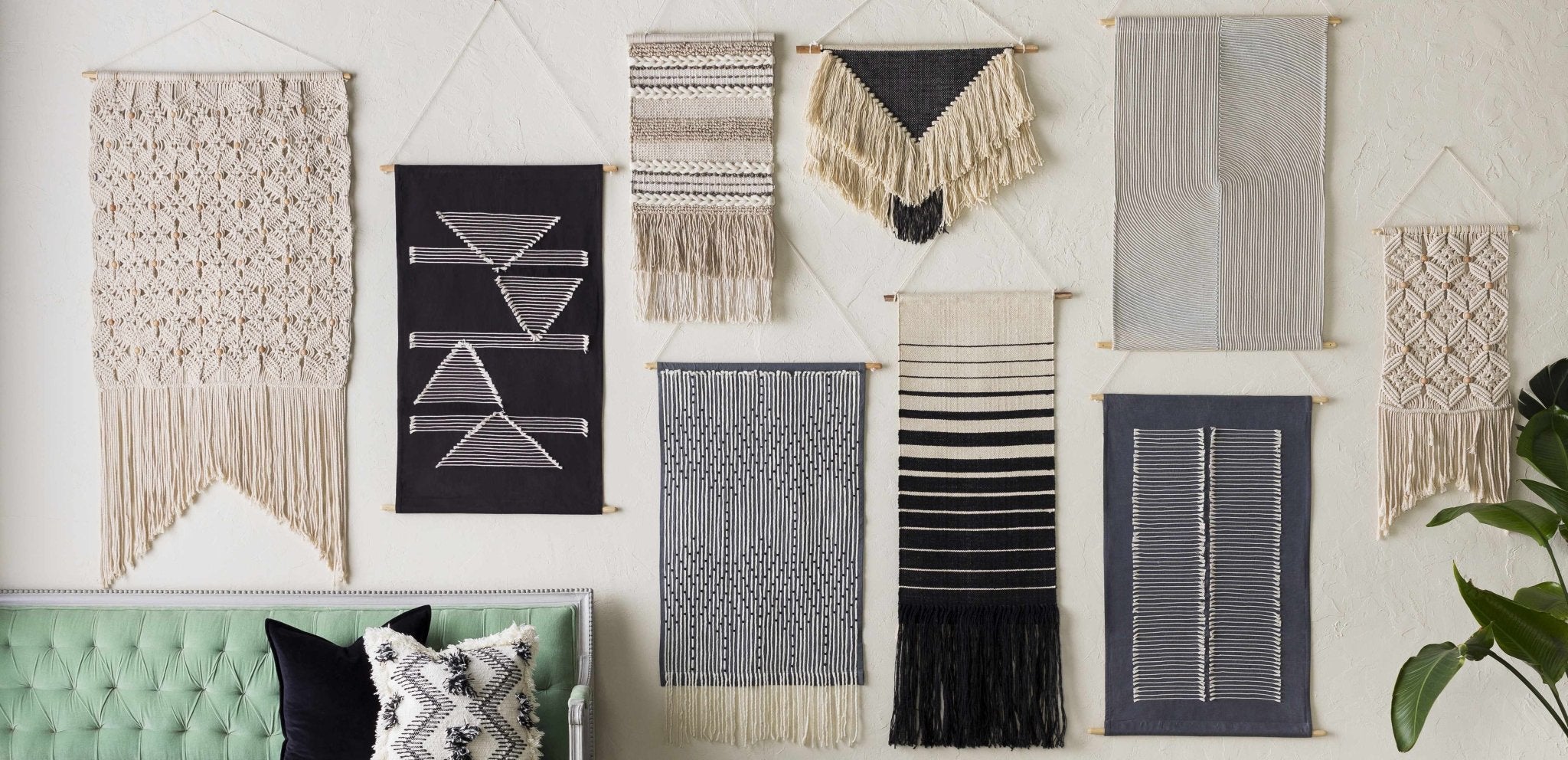How to shampoo a Carpet at Home like a Professional
The majority of homeowners believe that a regular vacuuming will do the trick for carpet cleaning. They don't realize it, yet their carpet contains microscopic debris despite looking clean on the outside. The carpet also gets older and more worn the more they vacuum it. When that happens, washing the carpet is the only method to make it look as good as new, and also get the smell out of the carpet. It will be properly cleaned both inside and out in this manner.
Can you, however, shampoo and clean your carpet at home? Although most people wouldn't know how to do it, you can. Read till the end to know how to shampoo carpet at home. We will also take a look at the symptoms indicating that your carpet needs shampooing, and the mistakes you must avoid while doing it.
How often should You Shampoo a Carpet?
There is no accurate answer to how often to shampoo a carpet as it is completely subjective based on the amount of traffic your carpet is exposed to. You should vacuum and shampoo your carpet more frequently if there is a lot of foot traffic. The frequency of cleaning your carpet can also be influenced by other factors including pets, allergies, and even the color of your carpet.
According to experts, to get rid of dust, filth, and allergens while cleaning silk rugs or any other fabrics, you should clean your carpet at least once every 12 months. This schedule, however, may change and you may shampoo your carpets more frequently if you have kids or pets.
If any of the following symptoms appear, you may want to attend to it immediately or hire professionals to clean or shampoo your carpet:
- Any kind of pest issue, such as fleas or carpet beetles
- visible stains or discoloration
- Persistent pet or musty odors
- Significant spills of wine or other liquids
- Symptoms of allergies getting worse
What can You use to shampoo Your Carpet?
Check out these effective ways in which carpet shampooing becomes more effortless:
Store-Bought Carpet Shampoos: These are specifically designed for carpets and come in various formulas for different needs. Some are targeted at pet stains, while others are great for high-traffic areas.
Steam Cleaners: Also known as carpet cleaners or carpet shampooers, these machines use hot water and cleaning solutions to deep-clean your carpet. Many models come with their own cleaning solutions.
Dry Carpet Shampoos: These powders are sprinkled onto the carpet, brushed in, and then vacuumed up, taking dirt and stains with them. They’re convenient for quick clean-ups.
Foam Carpet Shampoos: These are easy to use and are great for spot cleaning. Apply the foam, let it sit, and then vacuum it up.
Professional Carpet Cleaning Services: If you prefer not to do it yourself, hiring professionals can be an effective way to ensure a thorough clean.
Can you make a cleaning solution at home?
Absolutely! Making your own carpet cleaning solution is simple and cost-effective. Here are a few easy recipes you can try at home:
Vinegar and Water Solution:
- Mix equal parts white vinegar and water.
- Spray the solution onto the carpet and scrub gently.
- Let it dry and then vacuum.
Baking Soda and Vinegar:
- Sprinkle baking soda over the carpet.
- Mix equal parts vinegar and water, spray it over the baking soda.
- Let it fizz and bubble for a few minutes.
- Scrub with a brush, let it dry, and vacuum.
Dish Soap Solution:
- Mix a few drops of dish soap with warm water.
- Apply the solution to the carpet and scrub.
- Rinse with clean water and blot dry.
Hydrogen Peroxide and Baking Soda:
- Mix one part hydrogen peroxide with two parts of water.
- Add a few tablespoons of baking soda.
- Apply the mixture to the stain, scrub gently, let it dry, and vacuum.
How to Shampoo a Carpet by Yourself?
The best way to shampoo a carpet is with a carpet shampooer. Rent or purchase a carpet-shampooing machine before beginning the process. The carpet shampooer should then be filled with water and carpet soap by the instructions that came with your equipment.
Then, begin shampooing in a corner of the room and gradually drag the machine in overlapping, straight lines over the carpet. After cleaning the entire carpet, rinse the carpet again to remove any remaining soap from the fibers and refill the machine with only cold water. Let the floor dry for a minimum of 6 hours.
Check the details below to know the tools and supplies required and how to shampoo carpets using the correct techniques.
Shop Now-Floral Hand-Knotted Oushak Wool Area Rug
Carpet Shampooing Tools & Supplies
To shampoo a carpet, you will need the following:
- Box or oscillating fan
- Carpet cleaner
- Carpet Cleaning Machine
- Salt, baking soda, and a scrub brush are optional.
- Stain remover for pretreatment
- White vinegar, a spray bottle, and a microfiber cloth are also optional
- White, spotless cotton cloth or rag
Choose the right Carpet Shampoo
It might be challenging to pick the ideal carpet cleaning business, but it is imperative when you want to know how to shampoo carpet, considering the price, cleaning method, and carpet usage is important. It is true when they say, “You get what you pay for,” but it might not be accurate when selecting a carpet cleaning service. The right carpet shampoo may not be the most expensive one always. On the other hand, the type of cleaning method you choose will determine the cost of the procedure. Now, the two types that are usually available are dry and steam carpet cleaning.
The customer must be aware of the types of cleaning agents they want to be employed on the carpets given the number of chemicals that might harm the house, pets, and kids. Choosing a carpet cleaner that offers eco-friendly solutions can always influence a decision. The leading businesses to employ and rely on are those that offer a guarantee. This demonstrates their dedication to every one of their consumers as well as their dependability.
Carpet Shampooing Guide and Tips
Step 1: Remove all Furniture
Remove all of the furniture from the room before shampooing your carpets. Move everything to one side of the room if you can't get it all out. Move any little furniture and clear the space of any additional debris at the very least.
You can leave the pieces of furniture that are too heavy in the room where you want to do wool rug cleaning. However, for the other pieces, note that it will be more difficult to shampoo if there is furniture in the room because you have to maneuver around it.
Large furniture can be protected from water during shampooing by placing squares of aluminum foil, wood blocks, or plastic film under the legs or base if you are unable or unwilling to move the piece.
Step 2: Vacuum the Space Properly
Carpet shampooing machines have quite an efficient vacuum feature, although their primary use is to collect water and minute dirt particles. Larger debris, hair, and dust particles will be removed from the space by vacuuming, preparing the carpet for shampoo. Additionally, it will fluff up the carpet, making shampooing more effective.
Vacuum a bit more than normal because you are going through the extra trouble of shampooing. Go up and down the room in straight lines, and then perform a second set that crosses the first set. Moreover, look for stains that require pre-treatment before shampooing while you vacuum. So that you can quickly locate it, and place a sticky note or other type of marking there.
Step 3: Start Treating Stains
Spray any stains with a simple carpet stain remover, then let the cleaner do its job as instructed. Use a moist cloth to dab it up if that is what is instructed. If it suggests doing so, follow the instructions and let the shampooer pick it up. Other than stain remover, some stains could need anything. You might not need to use a stain remover because some carpet shampoos are intended for removing difficult stains.
Step 4: Prepare the Shampoo Solution
To prepare a shampoo solution for rug cleaning, follow these steps:
- Gather the necessary ingredients
- In a bucket or large container, pour warm water. Aim for a ratio of 1:10, with 1 part detergent to 10 parts glasses of water
- Add the mild liquid detergent to the warm water. Be cautious not to use too much detergent, as it can leave residue on the rug.
- Mix the detergent and water thoroughly until it forms a soapy solution.
- To enhance cleaning and remove odors, add a small amount of white vinegar to the mixture.
- Stir the solution gently to combine all the ingredients.
- Your shampoo solution for rug cleaning is now ready to use. Pour it into a spray bottle or use a sponge to apply it directly to the rug.
Step 5: Test on a Small Area of the Rug
Before applying shampoo or any cleaning solution to your entire rug, it is crucial to spot test it on a small, inconspicuous area first.
- Select a discreet section of the rug, preferably a corner or the underside, to minimize any potential visibility of damage.
- Apply a small amount of the shampoo solution to the chosen area.
- Gently blot the solution into the fibers using a clean cloth or sponge.
- Allow the spot to dry completely, following the recommended drying time.
- Inspect the test area for any adverse effects such as color fading, bleeding, or texture changes.
- If the spot clean shows no signs of damage or discoloration, it is safe to proceed with shampooing the entire rug. However, if any negative effects occur, refrain from using the shampoo solution and consider seeking professional assistance to avoid further damage.
Buy Now - Traditional Heriz low Pile Washable Area Rug
Deep Clean Your Carpet with a Shampooer
Step 1: Load the Shampooing Machine
Learn the basics
Read the instructions if the shampooer is new or you are renting it. When there are no instructions, at the very least inspect the device to see all of the parts, buttons, and settings. There are numerous varieties of carpet cleaners, and they all function differently. It's critical to understand how yours will function.
While many shampooers require you to walk backward while pulling the shampooer behind you, some shampooers function when you push them forward like a vacuum. Your carpet won't be cleaned if you attempt to use the shampooer differently than how it was intended.
Fill it with water
Some shampooers have a fixed water tank, while others feature a removable clean water tank. Do not add more water than is indicated by the max fill line. The line's purpose is to ensure that the machine functions properly. Observe any guidelines for using hot or cold water. Typically, using hot water is preferred since it better activates soap.
Add cleaner
Because not every soap is compatible with every machine, pick one that is made for the shampooer you have. Pour just the recommended amount of soap; any extra might clog the machine or leave soap scum on your carpet. Be mindful of whether the soap is poured into the clean water or a different area of the shampooer.
Step 2: Start Using From a Corner
Select a corner of the space and position the shampooer there, as near to the walls as you can. From there, make your way to the wall along the opposite side of the room. Then spin around, move the shampooer to a fresh line that just barely overlaps the old one, and proceed to travel back in the direction you came from. Follow this procedure all around the space.
Unlike vacuums, shampooers are not designed to be dragged back and forth randomly. The most efficient way to clean a room is to move in straight lines.
Step 3: Pull Slowly when Starting the Machine
Vacuums operate more quickly than shampooers. Soapy water must be sprayed into the carpet and then quickly sucked back up. Your carpets will remain wet and still dirty if you draw the shampooer too quickly and it is unable to remove all of the dirty water. Be patient and slowly draw the shampooer, about one step every second.
Although it may seem like you are moving too slowly and that it is taking too long, the machine can clean your carpet deeper the slower you move.
Step 4: Be alert about the Motor Sound
The dirty water tank on most shampooers has a float valve to alert you when the tank is full. When the float valve opens, the sound of the motor will noticeably change. When the tank is full, stop right away to avoid damaging the equipment. If the dirty water tank is full, the machine may feature a visible light or indicator that lets you know.
The water levels in the clean and dirty tanks can be seen by keeping an eye on the machine. Stop immediately if you realize that you are running low on clean water.
Before you are done washing the room, you may need to empty the filthy water and replenish the clean water several times. It depends on how big the room is, how big the tanks are, and how slowly you are traveling. If your carpet is extremely soiled or worn out, you might need to use the shampooer more than once, which will need repeatedly emptying and reloading the water tank.
Step 5: Discharge the Contaminated Water
Shampooers remove debris and filth that could clog shower and sink drains. The larger pipe in the toilet can handle this debris, but when a choice is available, emptying the water outside is usually the best course of action. If you must pour dirty water down the sink or shower drain, do it gradually while keeping the hot water running.
Step 6: Dry the Carpet Properly
Depending on the carpet's thickness and the size of the space, it may take six or more hours for the carpet to completely dry. There can be directions for drying time from your shampooer. To reduce drying time, turn on the overhead fan or scatter fans and blowers across the space.
Repositioning furniture on damp carpet risks leaving unsightly indentations and encouraging the growth of mildew due to the lack of airflow. To prevent people from walking on the wet carpet, you could wish to hang a sign stating that you just shampooed it.
Tips to maintain Clean Carpets
In particular moving furniture can be difficult. If you spot-clean any spills or stains immediately, you can go longer between major cleans. To save your carpets and extend the time between deep cleans, consider the following additional cleaning advice:
- As soon as a stain appears, treat it. In general, blot rather than scrub and start at the exterior and work your way inside to prevent the stain or spill from spreading. After using the proper cleanser and rinsing with warm water, blot the surface dry.
- Dust can be captured before it falls to the ground by using an air purifier with an HVAC filter.
- If you have dogs or a tendency to track in dirt, vacuum more frequently than once per week.
- If you have furry pets, brush them often (outside, if feasible) to lessen the amount of hair that ends up on the carpet.
- Know the best cleaning practices for the type of carpet you have.
- Mix one tablespoon of ammonia with one cup of water to remove harder stains like coffee, red wine, blood, and other liquids. However, avoid using this solution on wool or wool combination carpets.
- Mix one-quarter teaspoon of non-bleach detergent with 32 ounces of water to clean up the majority of food and alcohol spills.
- Placing a paper towel over the stain and ironing it with the iron on a warm (but not hot) setting will remove wax, fat, or oil stains.
- To ensure that your vacuum operates as effectively as possible, change your vacuum bag and filters as directed.
- To lessen the amount of dirt and grime taken inside, place doormats or machine-washable area rugs at all doorways.
- When you enter your home, take off your shoes.
- You can combine one part chlorine bleach with five parts water, but only for solution-dyed carpets. Other kinds of carpets, however, will be harmed by this.
FAQs
How do you apply shampoo to the carpet?
If you aim to carry out a DIY carpet shampooing, follow the step-by-step tutorial. It includes cleaning the space, soaking the carpet, cleaning the carpet cleaner to clean all the stains, and drying it properly.
Do you have to rinse carpet after shampooing?
Yes, it’s generally recommended to rinse the carpet after shampooing to remove any residual soap, which can attract dirt later.
Can I use hair shampoo on my carpet?
No, it is not a good idea to use hair shampoo to clean a carpet. It is because, unlike carpet cleaners, hair shampoo leaves a residue that in turn may cause skin irritation and allergies.
How often should I shampoo my carpet?
The answer to this question depends on how much traffic your carpet is exposed to. If a carpet is placed in a busy area, it requires more frequent cleaning, and vice versa.
Which type of water is generally preferred for shampooing?
Warm water is generally preferred for shampooing carpets as it helps to dissolve dirt and stains more effectively.
What can I use in carpet shampooer?
You can use store-bought carpet cleaning solutions specifically designed for carpet shampooers or homemade solutions like a mix of white vinegar and water, or dish soap and water.



